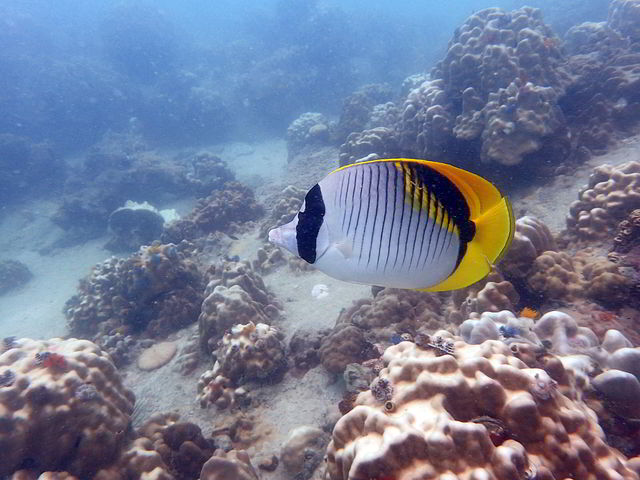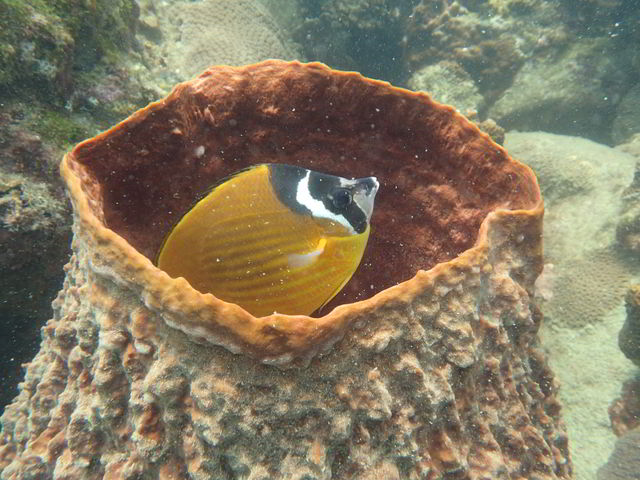- Home
- News
Stay within the limits of your training and experience
Divers must adhere to certain limits based on their certification. Sometimes you don’t understand why not to descend those few extra meters, but these limits were established for good reason. Exceeding your certification level can put you in a stressful environment that you’re not trained to handle. PADI also calculated these limits based on gas, depth, and physiological considerations. If you want to go deeper, think about advanced training.
Stay in good physical condition
You do not need to visit the gym every day, but it would be nice if you could take 30 steps with all your scuba gear and tank on without having to sit down and catch your breath. Although diving may not be as physical as some other sports activity, maintaining good physical condition is nonetheless important both on land and underwater, when situations like unexpected current can put your cardiovascular skills to the test.
Keep your equipment in good working order
Your scuba equipment is a highly technical gear that is responsible for keeping you alive, so take the extra time and spend the extra money to make sure it is functioning properly: service your equipment in accordance with the manufacturer’s recommendations, check it before every dive and clean (freshen) thoroughly after.
Master neutral buoyancy
Mastering neutral buoyancy not only makes you look professional, it also provides for longer bottom times. It saves your air, saves your energy, putting less stress on your body. And these can help to do your dive safer.
Have sufficient rest before a dive
Getting a good night’s sleep results in a healthy rested body. This, in turn, will help you resist the effects of harsh conditions, such as cold water. Being tired also slows your mind and body down, and makes you work harder than you normally would.
Stay hydrated and well nourished
Have a good breakfast, but leave a couple of hours after a meal before entering the water. Also, drink a lot of water before, between and after your dives. Just remember to use the restroom before you get in your wetsuit!
And finally: have fun and stay positive!
Single or Dual Lens?
When it comes to choosing your dive mask you have 2 options: single or dual lens.
Single lens masks don’t have any frame across the bridge of the nose so they normally seem more open.
Dual lens masks (also called «twin») have 2 separate lenses, which is great if you need to install prescription glasses as the lenses can be easily replaced on these models.
Mask Skirt
The skirt of a mask provides a good seal to keep air in and water out. Something simple but very important. Most of the best brands use high grade silicone to make their skirts and it’s been proven to be the best material for comfort and sealing.
You may notice that the majority of dive professionals have black skirted masks, this is because regular use of clear skirted masks can discolour slightly over time and show up dirt more easily.
Strap and Buckles
Diving masks come with a silicone strap and a buckle system that keeps the skirt close to the skin.
There are different types of buckles out there but the best models have moved the buckle attachment point into the skirt, instead of having it on the frame as the older models. This way, the skirt seals better as the stress transferred to the side of the mask is reduced.
Good Fit
It is most important to get a model that fits your face correct.
To find a good fit, do the following:
Put the mask over your face without straps. Inhale through your nose and shake your head a bit. If the mask stays in place, then it should create a seal for you. Adjust the strap and evaluate how the mask feels on your face — it should be comfortable. Try pinching your nose. Look around to see if there are any annoying blind spots. Try on several models.
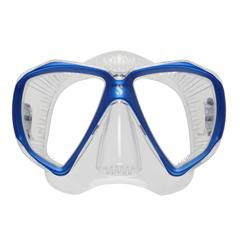
Take Care of Your Mask
Most new masks’ lenses need a scrub before use because the glass gets stuff on it during manufacturing. Ask your instructor for recommendations and help.
Before every dive apply a defog solution to your mask lens.
After every use always rinse it with fresh water. Store your mask in a dry place and out of direct sunlight.
Butterflyfishes are thin, tall, and plate-like. They are opposite shape of a shark’s mouth, which illustrates how important a role predation has played in their evolution. To further avoid predation, the tail of most butterflyfish looks just like the head, and often they have a line over their eye for disguise. Together this confuses predators, who don’t know which way the fish is going to swim away.
Butterflyfish are the easiest fish to spot on our dive sites and usually occur in pairs but sometimes can be found in schools.
The most common for Koh Tao is the Lined Butterflyfish, which is one of the biggest butterflyfishes and can reach 30 cm in length,
Copperband Butterflyfish (also known as Beaked Coralfish) with a long narrow nose and beautiful copper and orange bands on white body,
Weibels Butterflyfish with bright yellow-orange body, they can be seen in large groups at Shark Island and is favorite amongst photographers.
Longfin Bannerfish which is often mistaken for a Moorish Idol (which belongs to the family of Zanclidae). The fish colored in black and white, with an elongated dorsal fin, sometimes reaching a length of 20 cm. The caudal, anal and pectoral fins are often bright yellow.
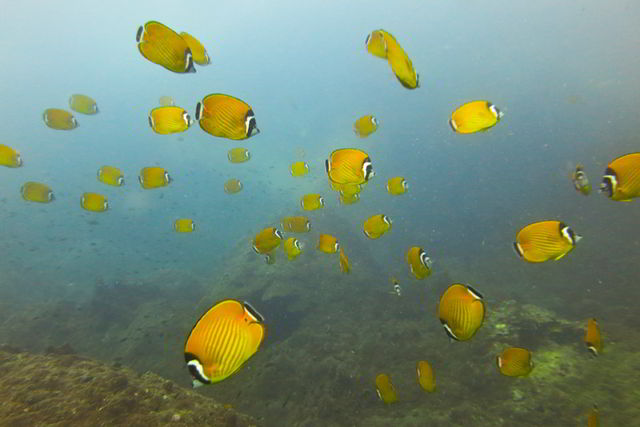
Butterflyfish feed on coral polyps, macro-invertebrates, and algae, so live only in healthy reef areas. In many areas they are a prized fish for the aquarium trade due to their bright colors, but on Koh Tao are mostly threatened by fishing activities or habitat destruction.
Ask dive guide for assistance
When you are on a dive boat, let your dive guide know you would like to do a weight check before to go underwater. In most cases, any dive professional will be glad to help you get in the water before the dive, and give or take extra weights if you ask for.
Do a weight check
Gear up and enter the water wearing your usual amount of weight, with your BCD inflated. Float upright on the surface with your head above the water, and release the air from your BC as you take a deep breath from your regulator. If you sink quickly below the surface, you took too much weights. If your head stays above water, you took not enough weights. If you float at eye level, you are just right.
Adjust weight
Inflate your BCD, add or remove weight, then complete the weight check again. Continue these steps until you float at eye level with an empty BC and a full breath of air in your lungs. Pay attention to your breath: you should sink slowly when you exhale.
Go down
When perfectly weighted, it is normal for divers to need a little extra help descending through the first 2–3 meters of water. You can use buoy line to push yourself down those first 2–3 meters or take one extra weight from your dive guide, then give it back when don’t need it anymore.
Control buoyancy by breathing
On the bottom, you should need very little air in your BC to stay neutrally buoyant. In fact, trained divers can control their buoyancy almost entirely through their breathing — inhaling slowly to hover in the water column, and exhaling slowly to descend easily down.
To master your buoyancy control we recommend to take PADI Peak Performance Buoyancy Specialty Course.
Snorkeling.
If you are not ready to go diving but still want to see the wonders of the sea then blue shallow waters of Koh Tao' beautiful beaches are good place to start. You may be a lucky enough to swim with turtle or juvenile black-tip reef sharks as well as few different types of colorful reef fish.
Kayaking.
Goes perfectly with snorkeling as you can stop whenever you want, with kayak you can get to some places not accessible by boat or by foot. The south of the island is best as there are a lot of interesting places to see all nearby, so you don’t have to go too far.
Monitor the wind and wave conditions before to go out, make sure you take sunscreen and a lot of drinking water.
Rock Climbing.
Granite rocks are everywhere on Koh Tao, so there are some great rock climbing routes to improve your technical climbing skills. If you have never tried climbing before, take the Discover Rock Climbing half day experience.
Hiking.
There are plenty of hiking trails around the island such as Sairee — Tanote, Laem Thian — Mao Bay, Mae Haad — Sai Nuan — Chalok. It is recommended to do any hiking either in the early morning before it gets too hot, or later in the afternoon. While the tracks are generally safe, it is a good idea to take a mobile phone and a first aid kit with you just in case. And lots of water.
View Points.
Koh Tao has many viewpoints, some you can drive to, some others you can reach on your foot, most have bar or restaurant, so you can enjoy breathtaking view sipping fruit shake.
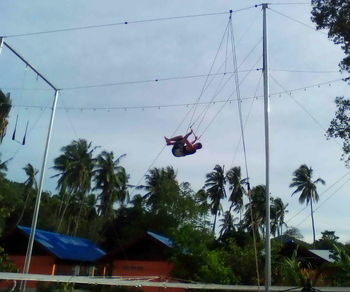
Flying Trapeze.
This is an absolutely unforgettable experience. You have to try it to believe it! Good Time Adventures offer beginners classes to advanced classes.
Yoga.
Yoga is practiced in a few locations on Koh Tao, and is an ideal way to learn to relax, find focus and tone the body. The three most popular yoga schools are Shambhala, Baan Talay, Ocean Sound. There are many styles of yoga and quite a few forms are available here.
SPA and Massage.
Koh Tao has lots to offer when it comes to beauty treatment of various kinds, from SPA, massage to pedicure, there are many available services to choose from.
Traditional Thai massage has been practiced and taught for centuries and it seems most Thais know at least a little of this ancient art. Also available oil massage, aromatherapy massage with pure essential oils, massage with aloe vera could be very helpful after sunbathing.
In the evening you can finally relax and enjoy your fresh seafood BBQ in one of the beach!


